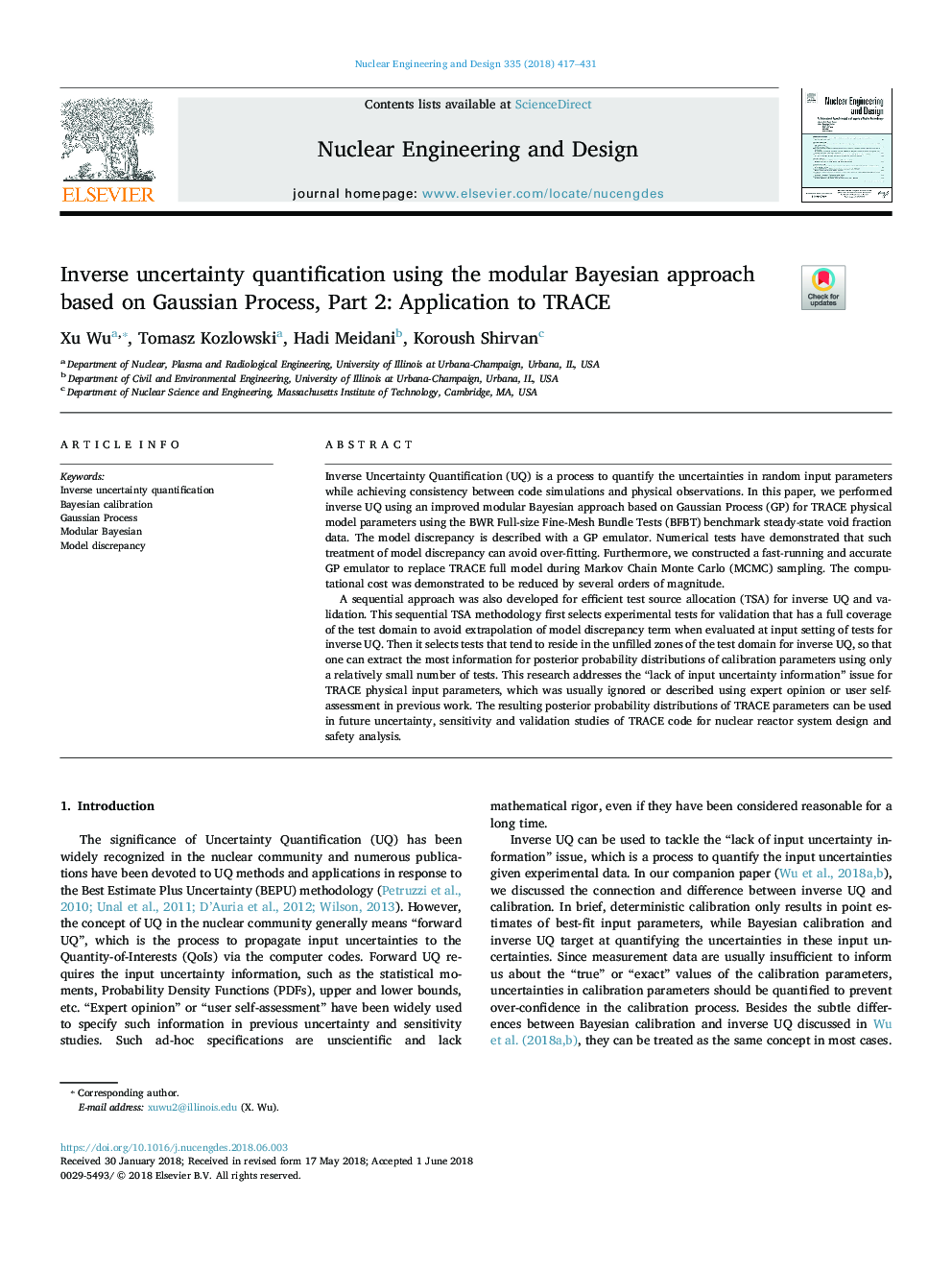| Article ID | Journal | Published Year | Pages | File Type |
|---|---|---|---|---|
| 6758798 | Nuclear Engineering and Design | 2018 | 15 Pages |
Abstract
A sequential approach was also developed for efficient test source allocation (TSA) for inverse UQ and validation. This sequential TSA methodology first selects experimental tests for validation that has a full coverage of the test domain to avoid extrapolation of model discrepancy term when evaluated at input setting of tests for inverse UQ. Then it selects tests that tend to reside in the unfilled zones of the test domain for inverse UQ, so that one can extract the most information for posterior probability distributions of calibration parameters using only a relatively small number of tests. This research addresses the “lack of input uncertainty information” issue for TRACE physical input parameters, which was usually ignored or described using expert opinion or user self-assessment in previous work. The resulting posterior probability distributions of TRACE parameters can be used in future uncertainty, sensitivity and validation studies of TRACE code for nuclear reactor system design and safety analysis.
Related Topics
Physical Sciences and Engineering
Energy
Energy Engineering and Power Technology
Authors
Xu Wu, Tomasz Kozlowski, Hadi Meidani, Koroush Shirvan,
